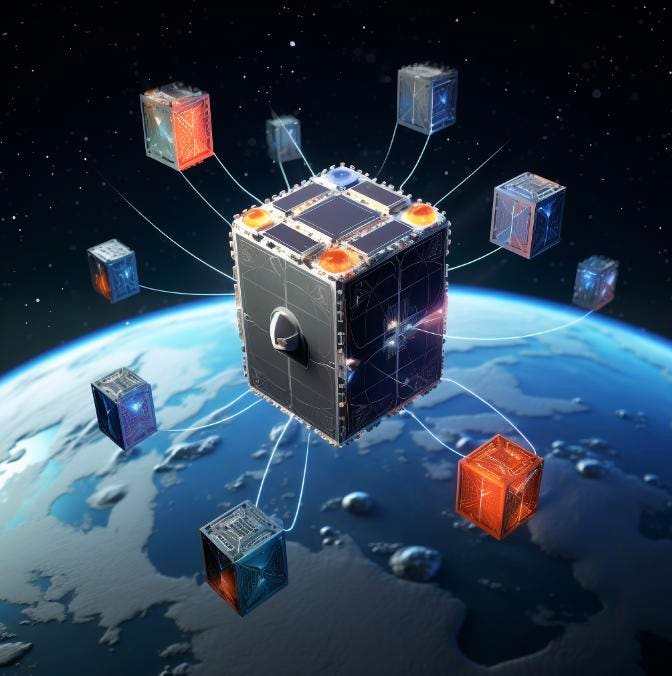NASA’s Groundbreaking Project To Integrate AI, Blockchain, & Nanosatellites
Midjourney, satellites, blockchain and AI
As part of pioneering the security of satellite communication in space, NASA is funding a groundbreaking project at the University of Miami’s Frost Institute for Data Science and Computing (IDSC) which will enable augmenting traditional large satellites with nanosatellites or constellations of nanosatellites.
These nanosatellites are designed to accomplish diverse goals, ranging from communication and weather prediction to Earth science research and observational data gathering. Technical innovation is a hallmark of NASA, a global leader in the development of novel technologies that enable US space missions and translate to a wide variety of applications from Space and Earth science to consumer goods and to national and homeland security.
With advances in satellite technology and reduced cost of deployment and operation, nanosatellites also come with significant challenges for the protection of their communication networks. Specifically, small satellites are owned and operated by a wide variety of public and private sector organizations, expanding the attack surface for cyber exploitation. The scenario is similar to Wi-Fi network vulnerabilities. These systems provide an opportunity for adversaries to threaten national security as well as raise economic concerns for satellite companies, operators, and users.
In the spring of 2023, a team of cybersecurity researchers from Thales, a multinational technology company, successfully hacked into the European Space Agency’s (ESA) nanosatellite, OPS-SAT, during the ESA’s cybersecurity exercise known as the Hack CYSAT challenge. This ethical hack attempt revealed potential vulnerabilities in satellite systems and aimed to understand the real impact of a cyberattack on space infrastructure.
Thales researchers were able to gain access to OPS-SAT’s onboard system using standard access rights, enabling control of its application environment. The intrusion allowed manipulation of the satellite’s global positioning system, attitude control system, and onboard camera. Exploiting vulnerabilities, the hackers injected malicious code, compromising data transmitted back to Earth and…


